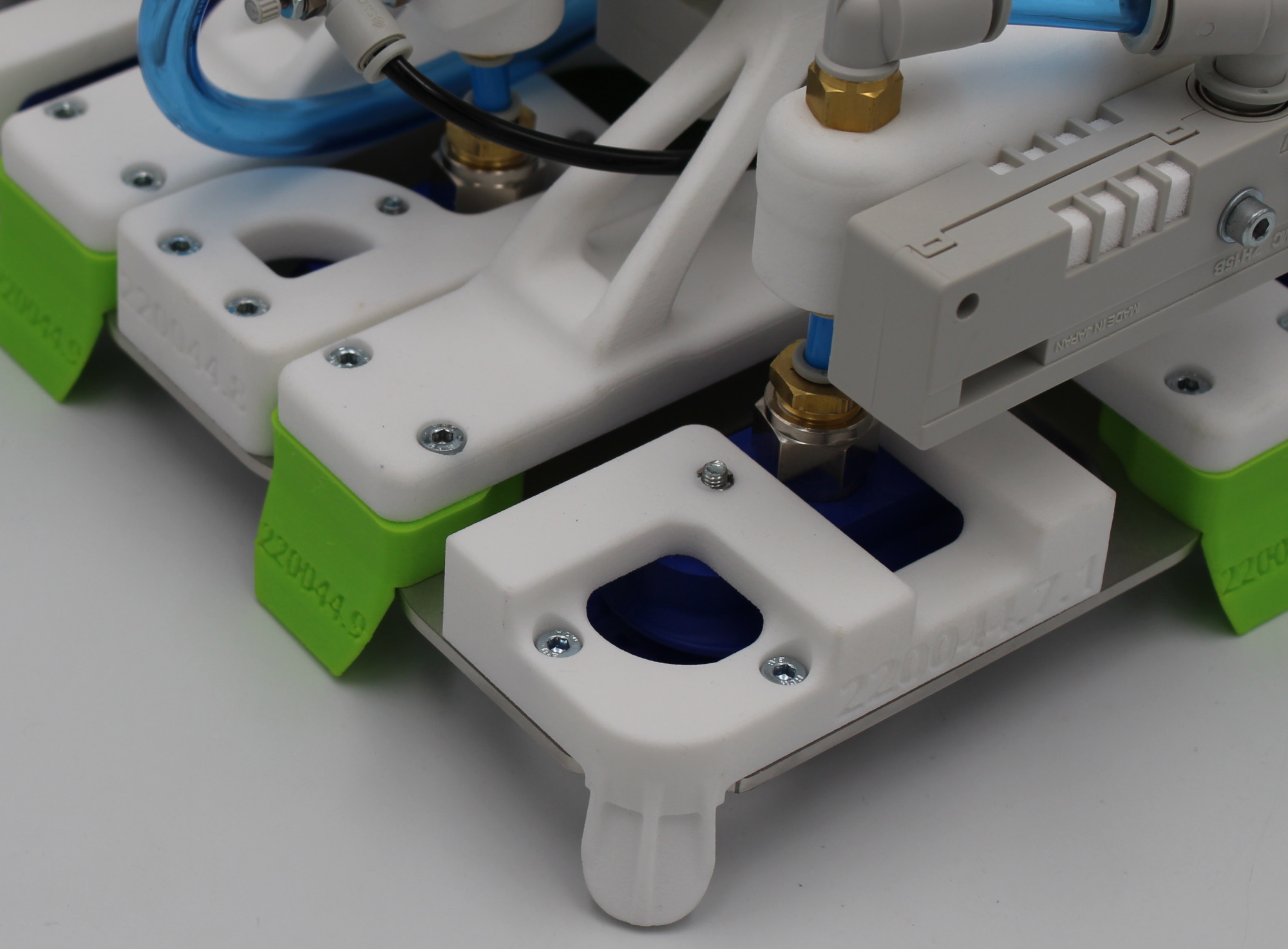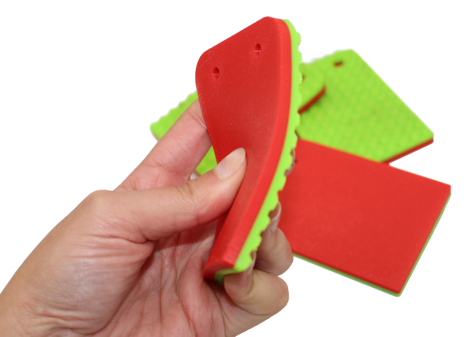Food sector components
At Lupeon in recent years we have carried out work on the development and validation of polymeric materials for additive manufacturing suitable for use in applications in food or pharmaceuticals sector.
The possibility of using components manufactured by 3D printing in applications in the food or pharmaceutical sector generates an important opportunity to improve many processes. Since new developments can be implemented in which the advantages offered by this technology are fully exploited: manufacture of complex geometries, manufacture of components with internal ducts for air or oil flow, weight optimization in mobile elements, etc.
A greater than the polymeric materials that you can find on this page. We also have metallic materials suitable for use in the food environment, such as 316L (1.4404) stainless steel. On the LU_METAL page you can find more information about this material.
POLYAMIDE 11 BLUE
PA11 BLUE FDA is a material specially designed for applications in the food sector. Since it is common that one of the requirements for components that are going to be in direct contact with food is that said component be manufactured in blue, so that it can be easily detected visually.
This material is authorized for use in contact with food according to EU Commission Regulation No. 10/2011 and FDA 21 CFR.
The pieces manufactured in blue PA11 BLUE FDA can be post-processed after the 3D printing process to polish and homogenize the surface to reduce its surface porosity and thus reduce the adherence of the remains of the product to be handled and also facilitate the process of cleaning. The image shows a piece with a standard finish on the left and a post-processed piece with polishing and surface homogenization on the right.

POLYAMIDE 11 MAGNETO DETECTABLE
The PA11 MDT FDA material is a composite based on a polyamide 11 matrix to which detectable particles are added, allowing the components manufactured in this material to be detectable both by X-ray equipment and by metal detection equipment. magnetic. These properties make this material ideal for manufacturing components for those food processing lines in which the final product is going to be scanned by X-ray or metal detection.
This material is authorized for use in contact with food according to EU Commission Regulation No. 10/2011 and FDA 21 CFR.
Parts manufactured in PA11 MDT FDA can be post-processed after the 3D printing process to polish and homogenize the surface to reduce its surface porosity and thus reduce the adherence of remains of the product to be handled and also facilitate the process of cleaning. The image shows components with a standard finish above and below with post-processed polishing and surface homogenization.

PA2200 – WHITE POLYAMIDE 12
PA2200 is a material formed from white polyamide 12. This material is possibly one of the most used for manufacturing components in 3D printing using SLS technology. It is a material with good mechanical properties and resistance to chemical agents. It is also very stable during the manufacturing process, so it is possible to manufacture components with complex geometries.
This material has a multitude of certifications for contact with food according to the regulations of different international agencies, it also has a biocompatibility certificate. Therefore, this material is used for applications in the food sector, but also in the pharmaceutical and medical sectors.
Parts made of PA2200 can be post-processed after the 3D printing process to polish and homogenize the surface to reduce its surface porosity and thus reduce the adherence of remains of the product to be handled and also facilitate the cleaning process.

FLEXIBLE COMPOSITES
In addition to the rigid materials indicated above, at Lupeon we also have different composites that allow us to manufacture flexible and elastic components through 3D printing. We have materials with hardness from shore A 60 to shore A 98, and within this range we have some materials suitable for contact with food.
Usually unitary manufacturing or small series of flexible components was not a viable option, because it was necessary to resort to injection molds or complex machining processes. Thanks to 3D printing and flexible composites, this entry barrier has been broken down for many applications, achieving viable costs for unitary manufacturing or short series.

ACCESSORIES
LU_Twister has been developed and patented by the Lupeon team in order to offer a universal solution for turning components in production lines. It is especially suitable for use in can and jar conveying applications. In addition to turning, ducts for water or air can be integrated, being able to take advantage of the turning process to wash or dry the container.
It is a universal solution, capable of adapting to the object to be turned, compact, reducing the turning path to optimize space, and plug and play. Lastly, it has been patented under registration ES1230425, and its operation can be seen in this video.
